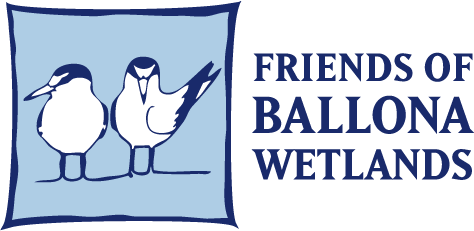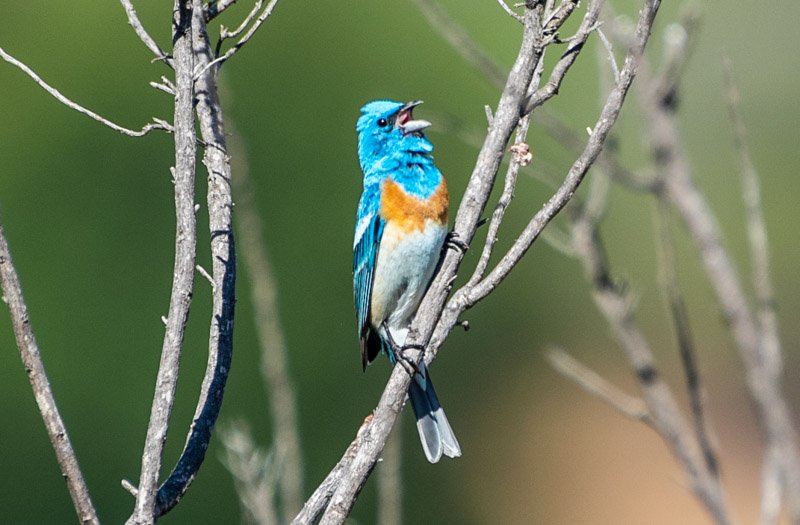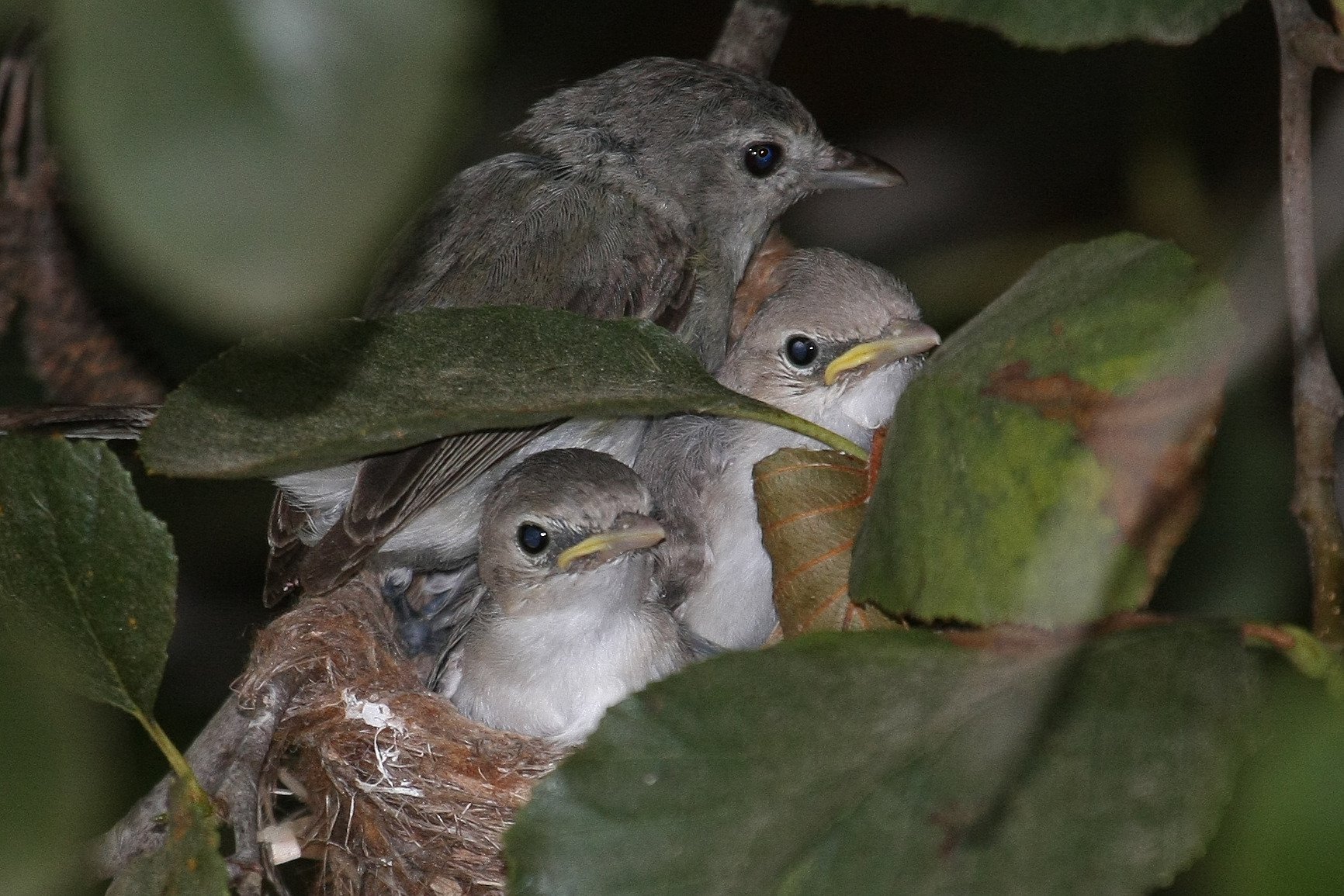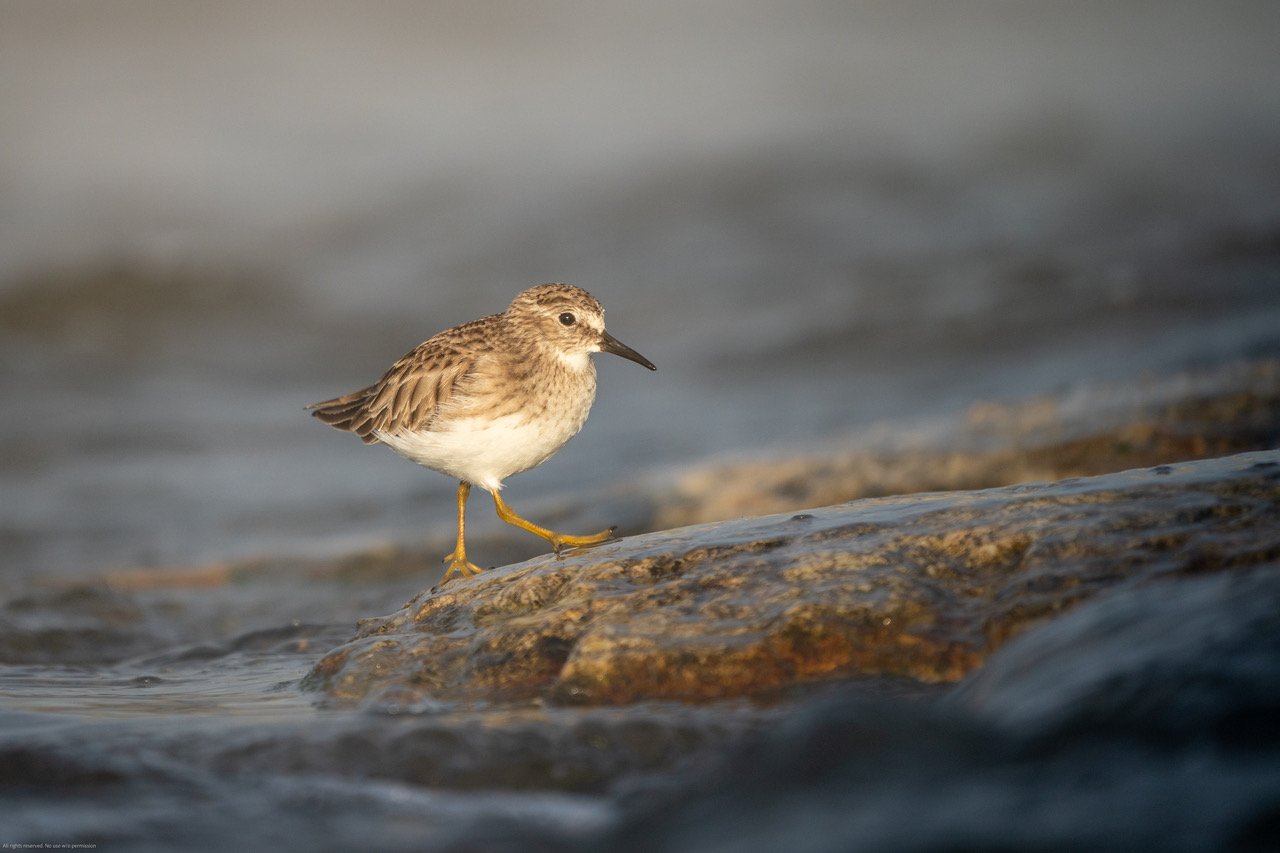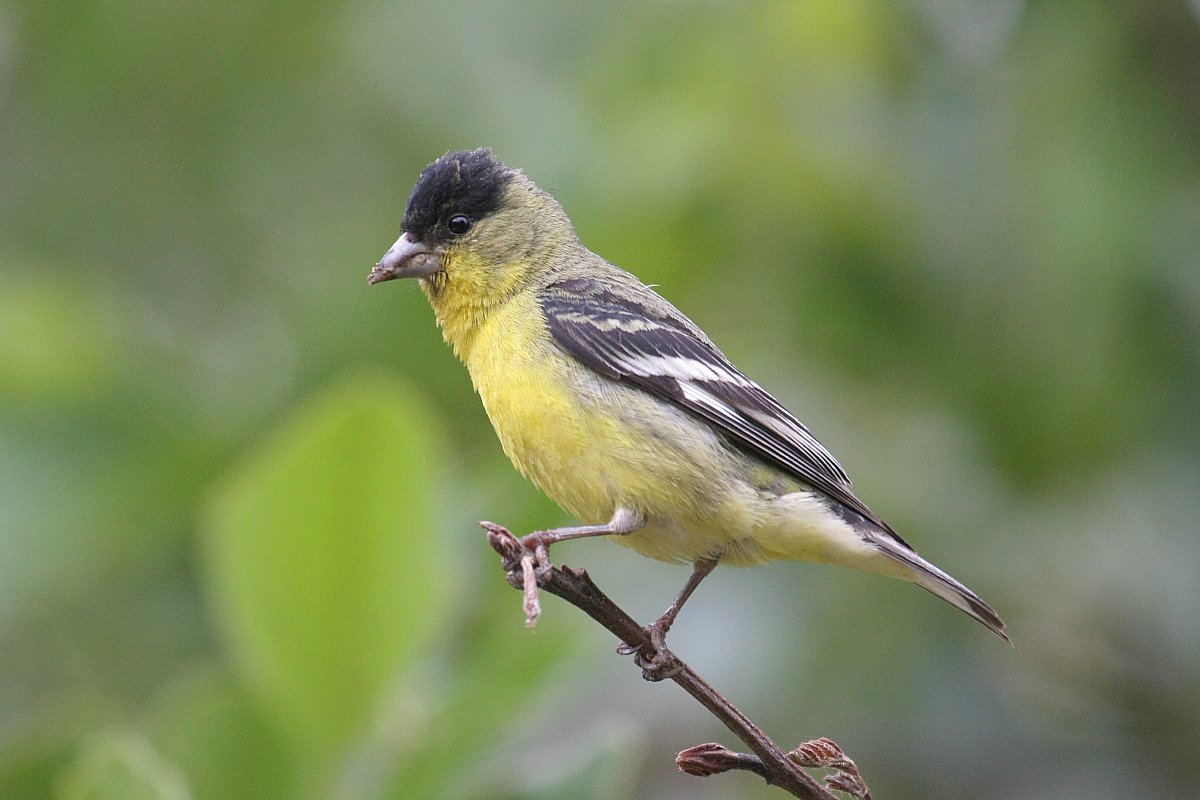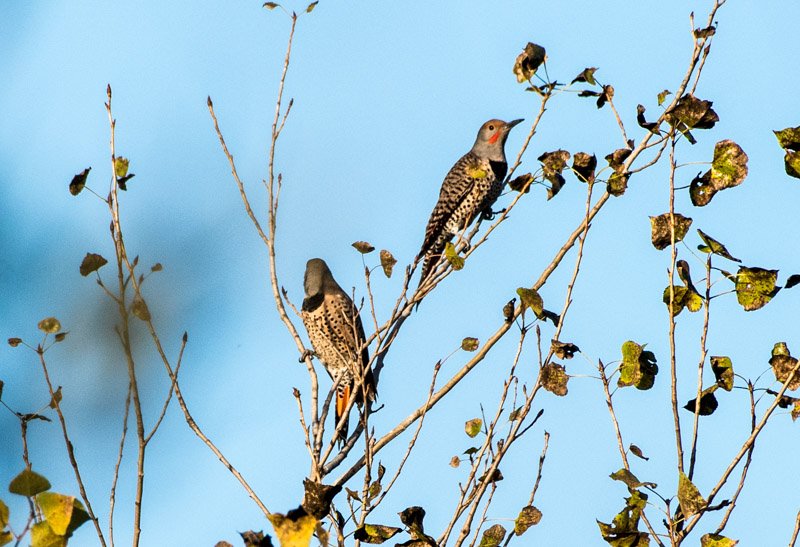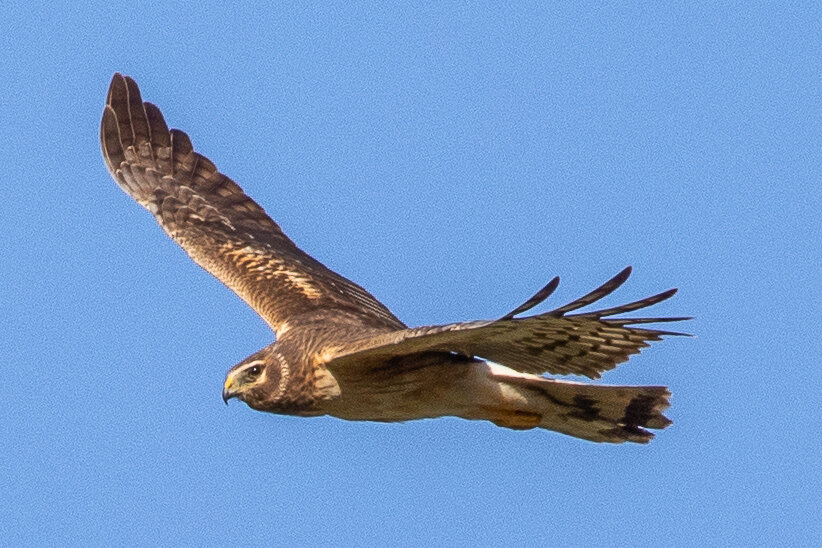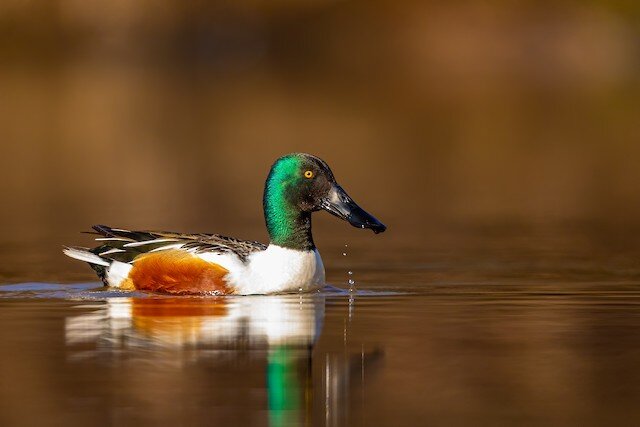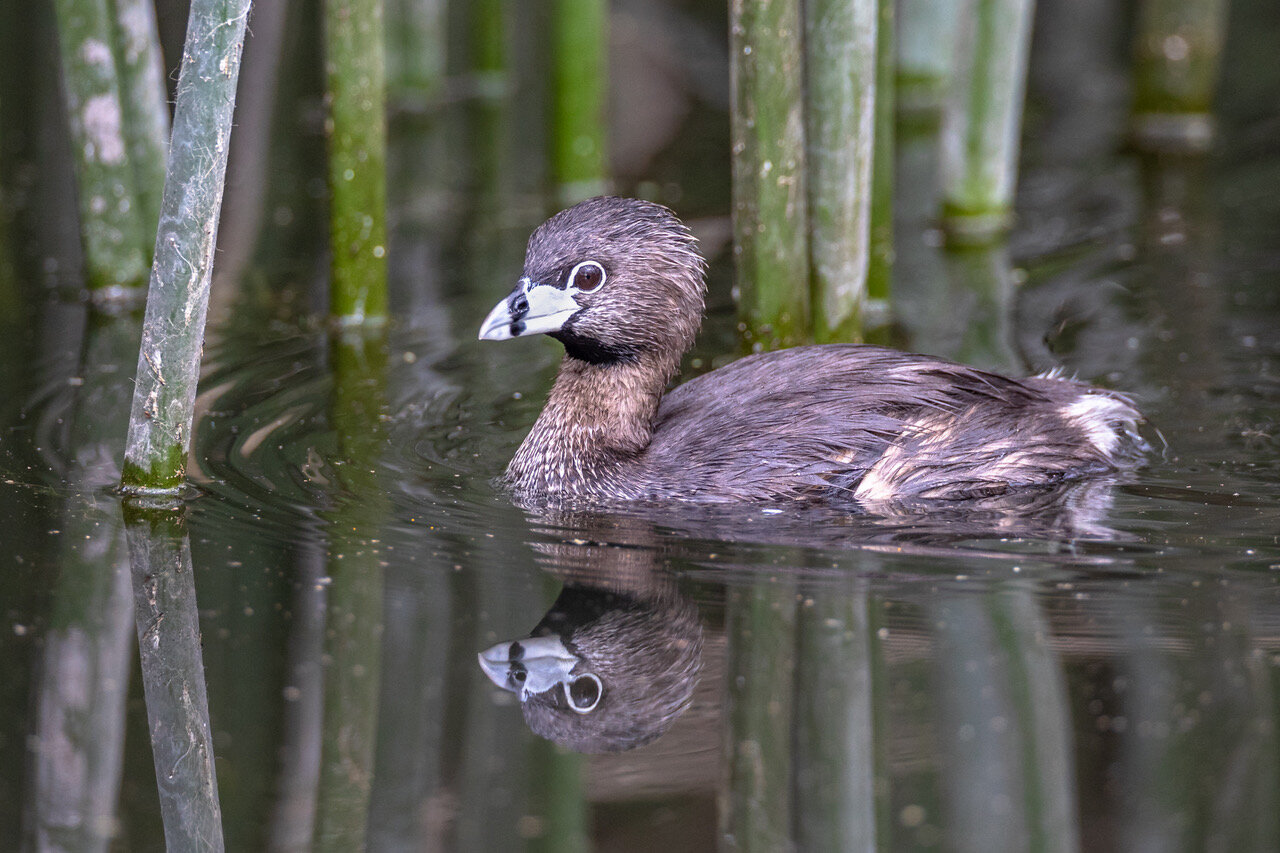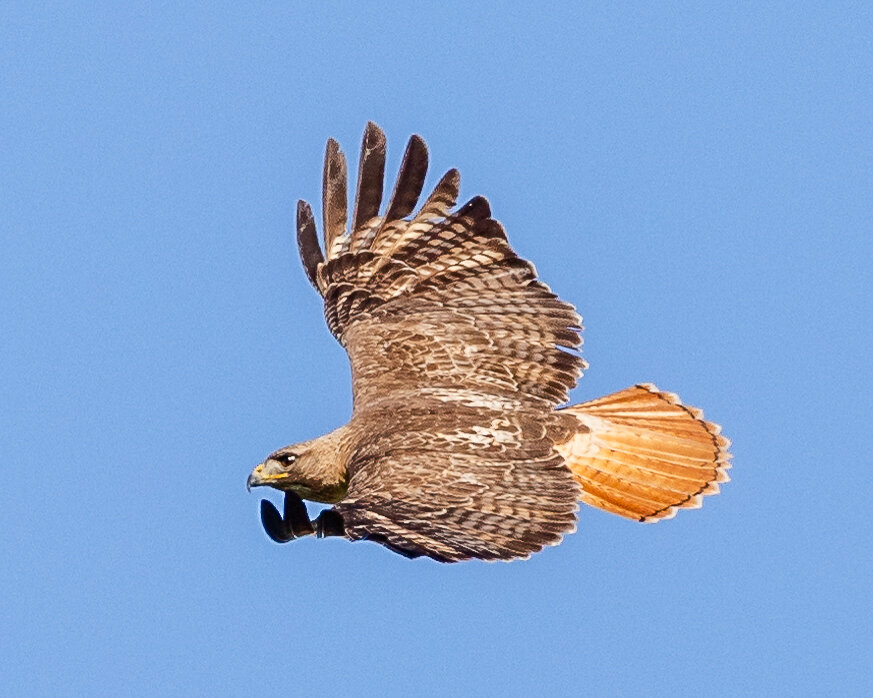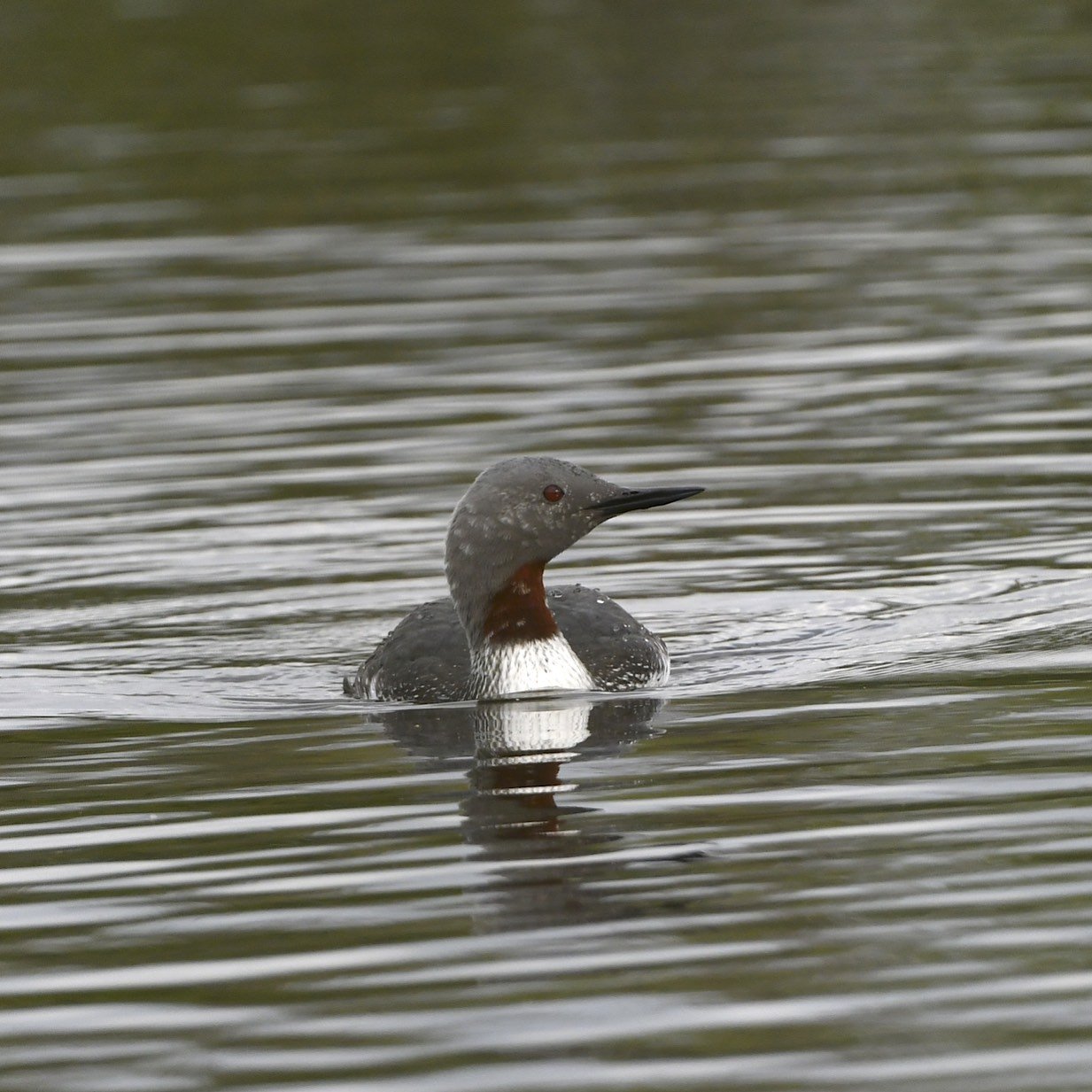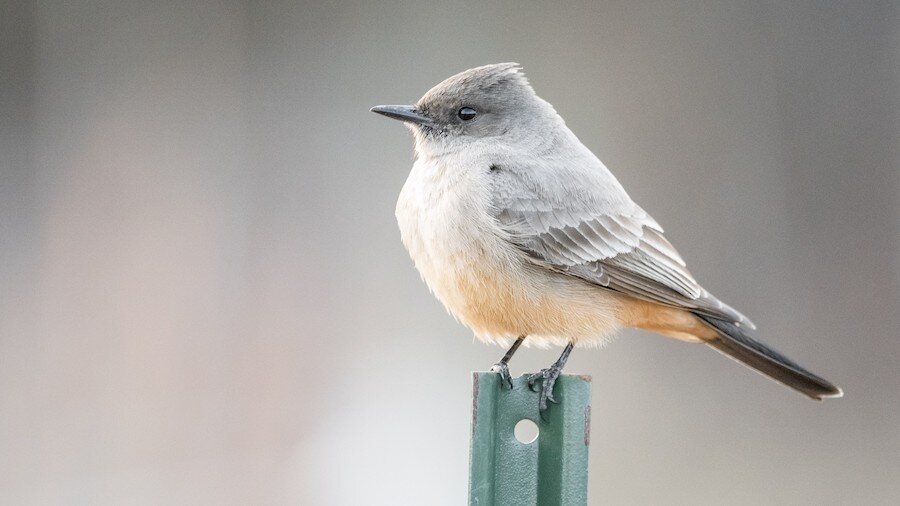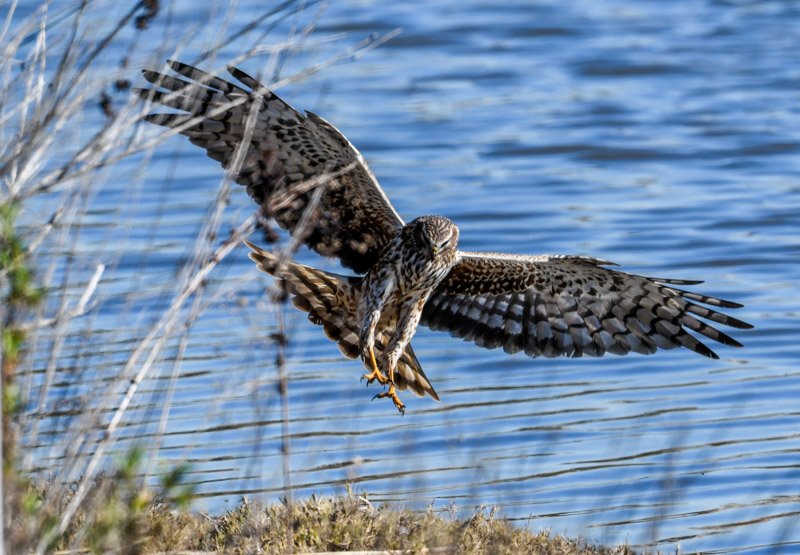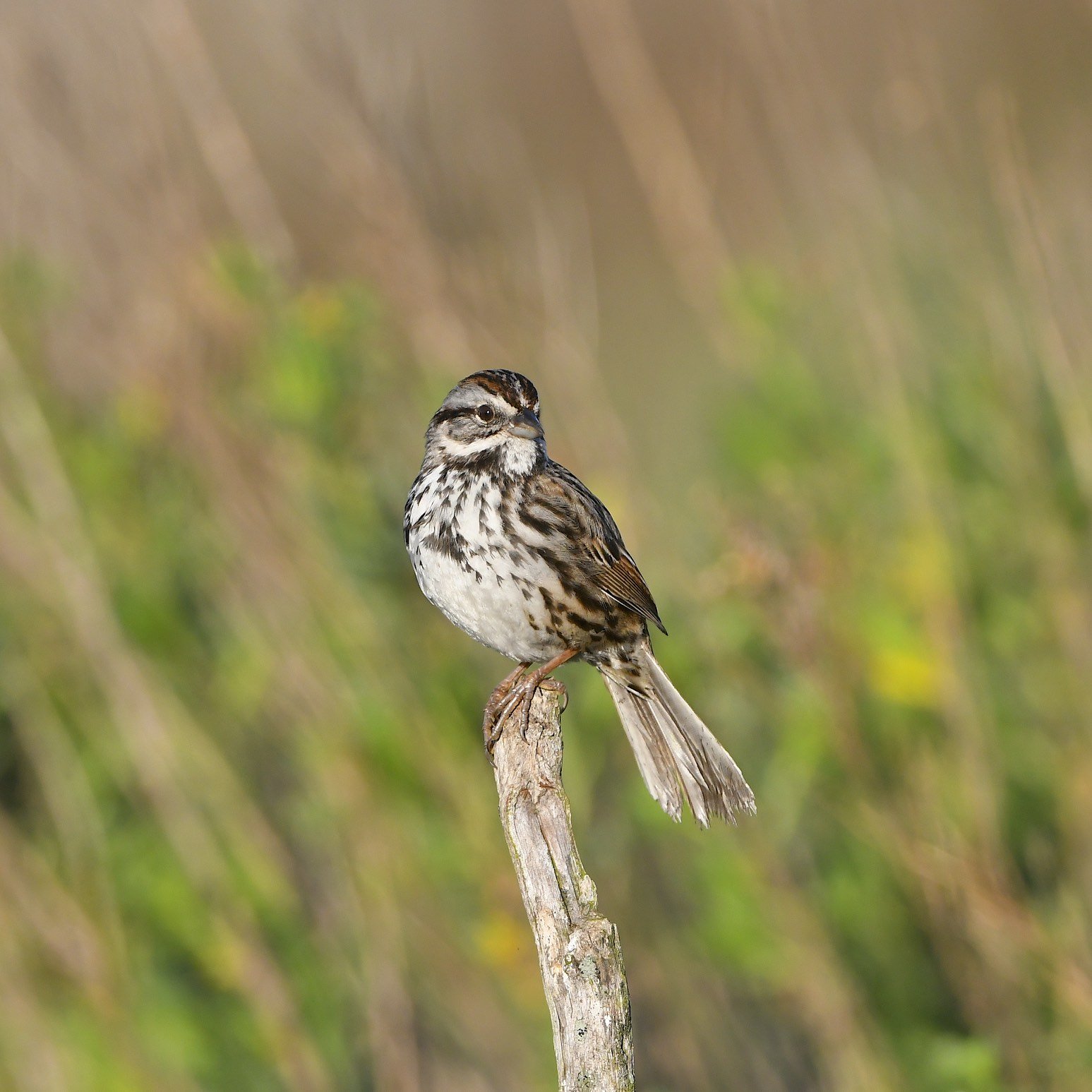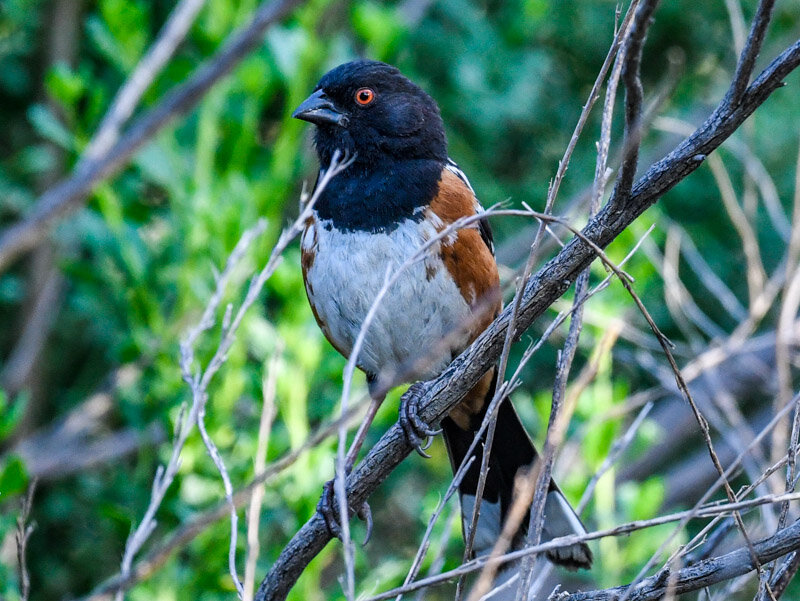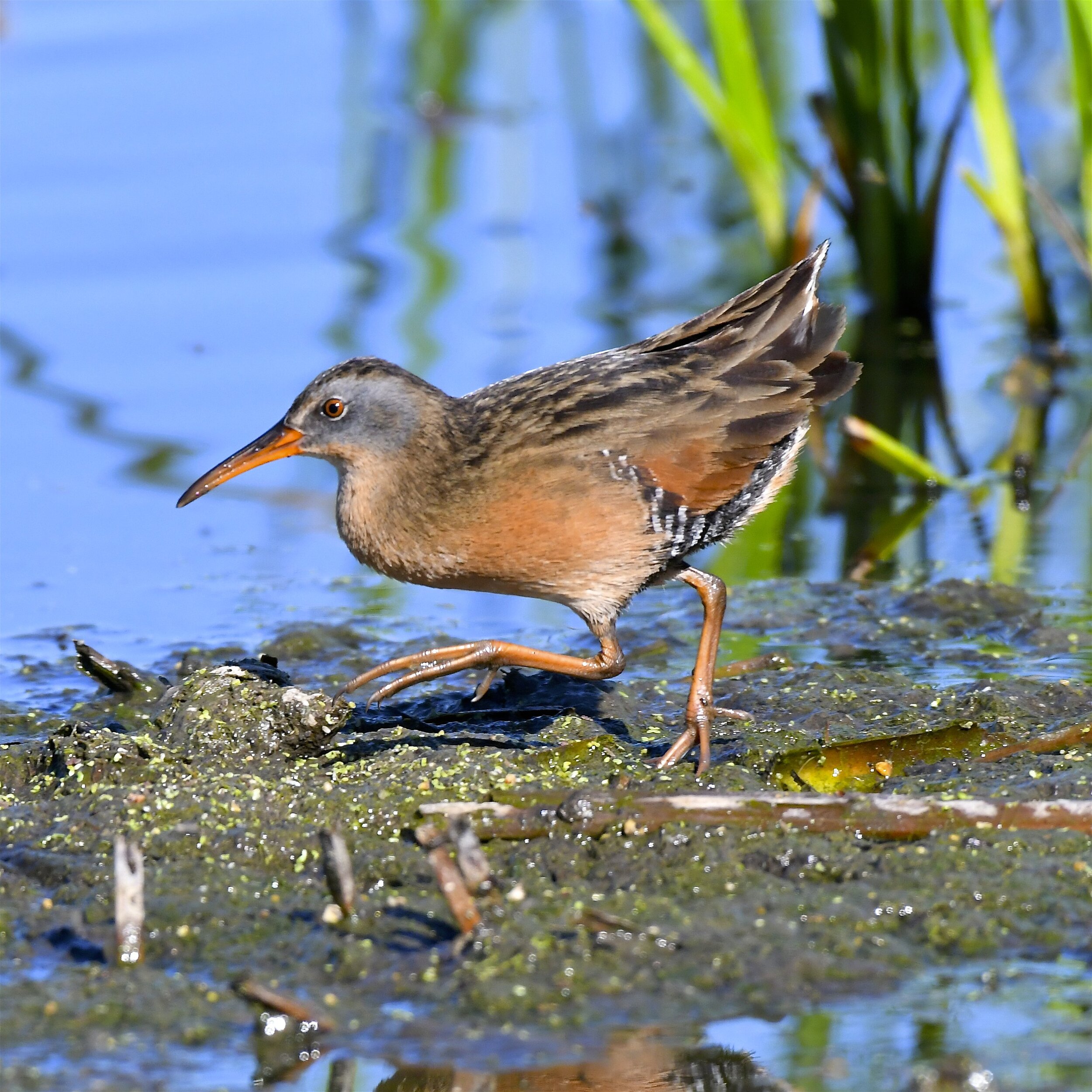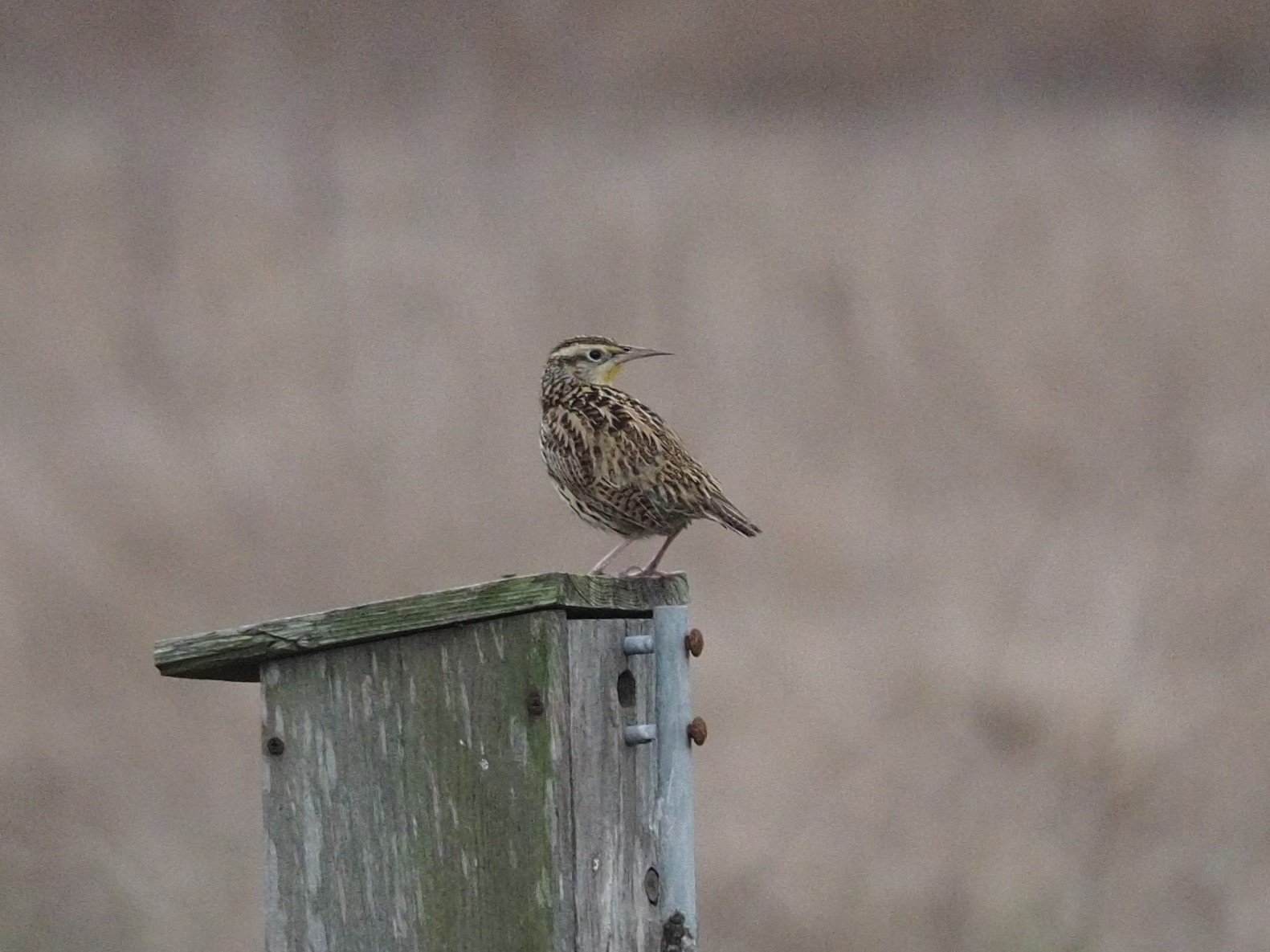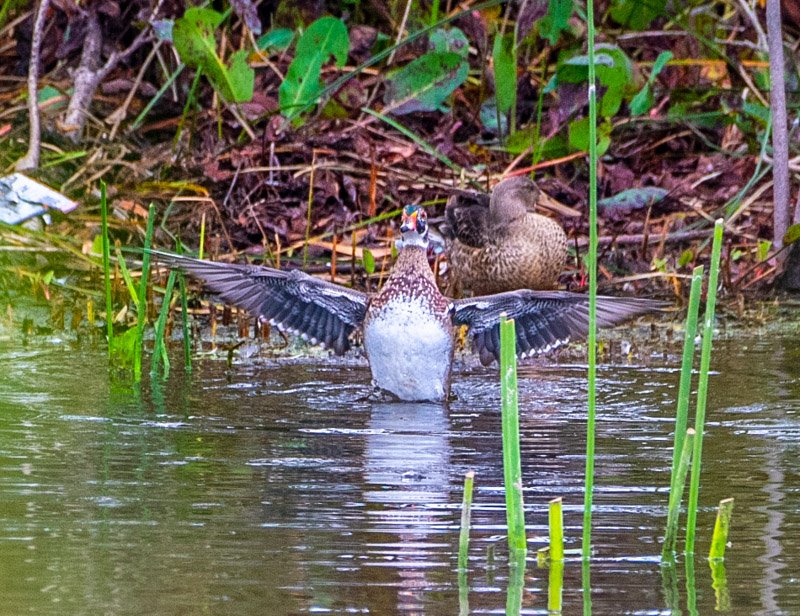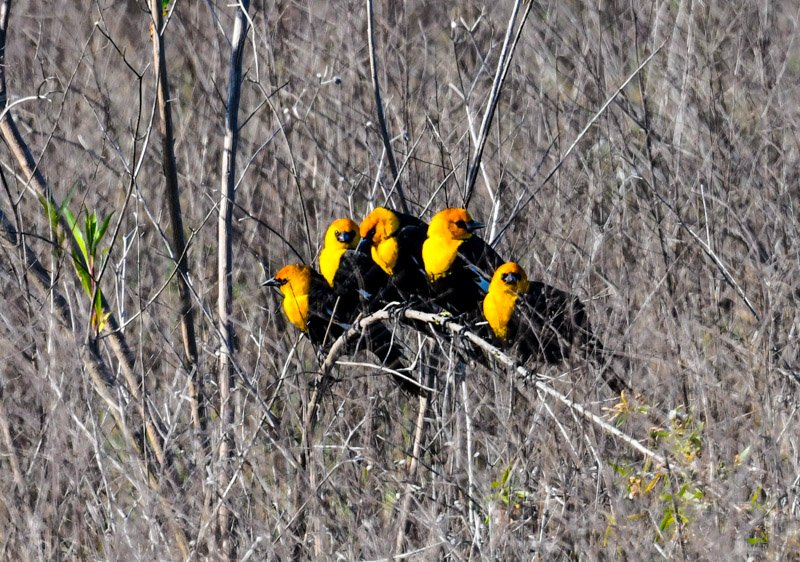BIRDS l-z
LAZULI BUNTING (Passerina amoena)
Fun Fact: Every male Lazuli Bunting has their own unique call with a multitude of notes and frequencies that they use to create a song they will use their entire life.
Diet: Insects, berries, and seeds
Habitat: Brushy areas, wooded valleys, stream edges, and large fields
Overview: The Lazuli Bunting is known for the males having bright turquoise heads with a gradient orange belly that is incredibly beautiful. They are mostly found in North America and during the breeding season the males can be found perched high up trying to advertise themselves for a mating. When the male and female mate they will pair bond, however many males will go out and seek extra pair copulations, and that comes with increased levels of territoriality that they seem to show.
Resources:
All About Birds
LEAST BELL'S VIREO (Vireo bellii)
Fun Fact: The Least Bell’s Vireo is a Federally Endangered bird that breeds in some riparian areas at Ballona.
Diet: Mainly insects and spiders, occasionally small berries.
Habitat: The Bell’s Vireo inhabits a dense shrubby or scrubby habitat such as brushy fields.
Overview: The Least Bell’s Vireo, a subspecies of the Bell’s Vireo, is a brown and gray bird with slightly white feathers. Although a small bird, the Least Bell’s Vireo sings enthusiastically and its pitch is distinctive.
Resources:
https://www.allaboutbirds.org/guide/Bells_Vireo/overview
https://macaulaylibrary.org/asset/212118#_ga=2.183275877.293696603.1618200171-1798675430.1611105711
LEAST BITTERN (Ixobrychus exilis)
Fun Fact: The Least Bittern can compress its body greatly to squeeze in between marsh stems and reeds.
Diet: Small fish, like minnows, sunfishes, perches, sometimes small snakes, frogs, eggs.
Habitat: Marshes and other wetlands with tall vegetation.
Overview: The Least Bittern has long legs, toes, neck, and bill. It is often seen with its neck drawn inwards, giving it a hunched appearance. It is dark on its top, tannish brown around its sides, and light on its underside. This bittern is often seen along the edges of marshes, where it carefully stalks its prey.
Resources: All About Birds
LEAST SANDPIPER (Calidris minutilla)
Fun Fact: The Least Sandpiper is the smallest shorebird in the world, weighing only an ounce and measuring about 5-6 inches in length.
Diet: Aquatic invertebrates, along with insects and the seeds of marsh grasses.
Habitat: Marshes and other muddy regions; breeds in the boreal forests in the far northern reaches of North America.
Overview: The Least Sandpiper has a round body with short wings, a slightly downward-curved bill, and mid-sized legs. It is brown above and white below, with a black bill and (often muddy) yellowish-green legs. It feeds mostly on aquatic invertebrates and insects, which it obtains by probing its bill into the mud, and then transports from bill tip to mouth using the water’s surface tension.
Resources: All About Birds
LESSER GOLDFINCH (Spinus psaltria)
Fun Fact: Their songs includes fragments of other birds’ songs.
Diet: Seeds, particularly those of the sunflower family, along with other fruits, buds, and flowers. They can be spotted dangling upside down to gain better access to seed pods.
Habitat: Open woodlands, and other open habitats including even desert oases, suburbs, and cities.
Overview: The male Lesser Goldfinch found in California has a green back, with a bright yellow underside and a black tail with white corners -- those living further south, in Central and South America, or in the Eastern US, have black backs. Females sport olive green backs with less vibrant yellow undersides and black wings with two white wingbars.
Resources: All About Birds
https://www.allaboutbirds.org/guide/Lesser_Goldfinch/
https://macaulaylibrary.org/asset/22869#_ga=2.20271611.293696603.1618200171-1798675430.1611105711
LESSER SCAUP (Aythya affinis)
Fun Fact: The Lesser Scaup is the most popular diving duck in North America, and has a total population in the world of around 3.8 million.
Diet: Insects, aquatic invertebrates, aquatic plants and seeds.
Habitat: During breeding season freshwater wetlands, paries. Outside of breeding season lakes, ponds, and estuaries.
Overview: The Lesser Scaup is a common diving duck that breeds mainly in Canada, and then migrates down to California for the winter months, where they remain temporarily. They tend to congregate into large groups, and can sometimes be seen at Ballona in the winter months by the wetlands. They are a fairly dark color, and as previously mentioned they tend to congregate so can appear as a black-looking mass on the wetlands.
Listen:
LINCOLN'S SPARROW (Melospiza lincolnii)
Fun Fact: The Lincoln’s Sparrow males will sing their songs during the winter months to show to the females that they have a good song and that they are a better mate because they can withstand the cold temperatures.
Diet: Insects and small seeds
Habitat: Wet meadows, patches of trees, fields, and forest edges
Overview: The Lincoln’s Sparrow is one of the smaller species of sparrow that are known for ability to sneak and hide among wildlife. They are found all across North America, breeding in the upper regions of Canada and migrating to the lower parts of the United States during the nonbreeding season. Though they might be hard to spot visually they have a unique song that definitely get one's attention.
Resources:
All About Birds
https://www.allaboutbirds.org/guide/Lincolns_Sparrow
https://macaulaylibrary.org/asset/100868#_ga=2.216906069.293696603.1618200171-1798675430.1611105711
LOGGERHEAD SHRIKE (Lanius ludovicianus)
Fun Fact: Loggerhead Shrike has a large head in comparison to the size of its body. Befittingly, Loggerhead holds the same meaning as “blockhead.”
Diet: Insects, rodents, lizards, and birds.
Habitat: Open country with scattered vegetation.
Overview: Loggerhead Shrikes are songbirds with a prominent black mask extending through its eye to its thick bill. Despite not having talons, this species kills their prey through crushing them on thorns, barbed wire, and tight places.
Resources:
All About Birds
https://www.allaboutbirds.org/guide/Loggerhead_Shrike
https://macaulaylibrary.org/asset/276754671#_ga=2.8866805.116234397.1614395346-1798675430.1611105711
LONG-BILLED DOWITCHER (Limnodromus scolopaceus)
Fun Fact: The male dowitcher raises and takes care of the newborns.
Diet: Insects and aquatic invertebrates.
Habitat: Tundra, marshes, and mudflats.
Overview: Long-Billed Dowitchers have cinnamon underbellies, black wings, and bills twice the size of its head. These bills have receptors which allow it to track down its prey by touch. As it feeds, Dowitchers make sewing-machine-like motions with its head.
Resources:
All About Birds
https://www.allaboutbirds.org/guide/Long-billed_Dowitcher/overview
MALLARD (Anas platyrhynchos)
Fun Fact: The common “quack” of a duck is created by the female Mallard. The male instead produces raspy, quieter sounds.
Diet: Mainly plant material, but also insects and other small animals; omnivorous.
Habitat: Any aquatic habitat, though they prefer freshwater to saltwater.
Overview: The most common type of bird found in North America, the Mallard is the ancestor to all but one domestic duck species (the Muscovy Duck). Due to its incredible geographic range, many separate species and subspecies have derived from the original Mallard species. Male Mallards flaunt an iridescent green head and yellow bill, coupled with a grey and brown breast and black rear, while females are primarily brownish, with an indigo accent at the wings.
Resources: All About Birds
https://www.allaboutbirds.org/guide/Mallard
Audubon
https://www.audubon.org/field-guide/bird/mallard
https://macaulaylibrary.org/asset/3424#_ga=2.46671079.116234397.1614395346-1798675430.1611105711
MARBLED GODWIT (Limosa fedoa)
Fun Fact: The Marbled Godwit sticks its bill into the mud to look for food while walking.
Diet: Aquatic invertebrates.
Habitat: Grasslands near marshes. They are seen along the coast and in estuaries and coastal wetlands during the winter season.
Overview: The Marbled Godwit is a long-legged shore bird who is barred above and below, in white, brown, and cinnamon. They also sport cinnamon underwings, and a cinnamon underside, when not in breeding season. Their bills are very long and black at the tip, orange at the base during breeding, and pink when nonbreeding. These elegant birds are often spotted wading through shallow waters in search of prey, enjoy perching on nearby posts, and sleep standing up, with one leg raised.
Resources: All About Birds
MARSH WREN (Cistothorus palustris)
Fun Fact: Marsh Wrens are lively singers. They sing throughout the day, and sometimes, throughout the night.
Diet: Insects and spiders.
Habitat: Wetlands.
Overview: These tiny birds have streaking white eyebrows, a perky tail, and a white line down its back. When possible, its skinny legs clench onto two separate branches for support.
Resources:
All About Birds
MERLIN (Falco columbarius)
Fun Fact: Medieval European noblewomen—including Catherine the Great and Mary Queen of Scots—used Merlins to hunt Skylarks. Even today, some falconers work with them.
Diet: Small birds, which they attack at high speeds.
Habitat: Forested areas, especially those along the coast or rivers. They are also moving into cities and towns.
Overview: Merlins are a type of falcon with blue backs, black tailfeathers, a white, tan-speckled underside, and yellow-ringed eyes. They are known to plot coordinated attacks on prey (commonly colonies of waxwings), and have recovered nicely since their population took a hit in the mid-1900s due to the proliferation of DDT in the environment.
Resources: All About Birds
https://www.allaboutbirds.org/guide/merlin
https://macaulaylibrary.org/asset/94959101#_ga=2.106858563.116234397.1614395346-1798675430.1611105711
MEW GULL (Larus canus)
Fun Fact: The Mew Gull is the only “white headed” gull that tends to use trees for perching and nesting.
Diet: Fish, insects, and marine invertebrates.
Habitat: Tundra, marshy areas, pods, and coastal shores.
Overview: The Mew Gull is a common resident to the Pacific Coasts and can be found in California during their nonbreeding seasons. They are also known as the “Common Gull”, “Short-billed Gull”, and even the “Kamchatka Gull”.
Resources:
All About Birds
MOURNING DOVE (Zenaida macroura)
Fun Fact: Mourning Doves can drink brackish spring water (up to almost half the salinity of sea water) without becoming dehydrated the way humans and most other birds would.
Diet: Seeds! 99% of their diet.
Habitat: Open habitats and woodlands, grasslands, agricultural fields, backyards, and roadsides.
Overview: Mourning Doves are very common throughout Ballona. They are soft brown, a little pink, and have black spots on their cheeks and wings. When taking off, their wings make a whistling sound. They forage on the ground for seeds and store them in their crop to consume later.
NASHVILLE WARBLER (Oreothlypis ruficapilla)
Fun Fact: Nashville Warblers sometimes construct their nest with porcupine quills.
Diet: Insects.
Habitat: Mixed forests.
Overview: Nashville Warblers have a yellow underbelly and a grey backside. The males, unlike the females, have a signature red crown on their forehead. While this species was first discovered in Nashville, Tennessee, this bird does not nest nearby. It was in migration at the time of discovery. Rare at Ballona.
Resources:
All About Birds
https://www.allaboutbirds.org/guide/Western_Meadowlark/
https://macaulaylibrary.org/asset/85228#_ga=2.213299543.293696603.1618200171-1798675430.1611105711
Photo credit: Adam Brandemihl
NORTHERN FLICKER (Colaptes auratus cafer)
Fun Fact: The Northern Flicker has a long tongue which it uses to pick up ants while on the ground.
Diet: Insects, including ants found underground, which they get by hammering into the soil in the way that most woodpeckers drill into wood. In the winter, they often eat fruits and seeds.
Habitat: Open woodlands, forest edges, parks, suburbs, marshy regions.
Overview: Northern Flickers are large woodpeckers, with rounded heads and very noticeable red tail undersides. They are brown overall, with dark flecks and spots throughout, as well as some red on their head, near their mouth.
Resources: All About Birds
NORTHERN HARRIER (Circus hudsonius)
Fun Fact: Northern Harriers depend on both hearing and sight to catch its prey. The stiff feathers on its face assist in this hunt, as the feathers shape its face to maximize the sound directed towards its ears.
Diet: Mice, rabbits, and songbirds.
Habitat: Grasslands and wetlands with short, thick vegetation.
Overview: Northern Harriers have owlish faces and slim bodies. Their wings make a V shape as they fly, and they have a patch of white at the top of its long tail.
Resources:
All About Birds
NORTHERN MOCKINGBIRD (Mimus polyglottos)
Fun Fact: Northern Mockingbirds continue to add new sounds to their repertoires throughout their lives. A male may learn around 200 songs throughout its life. They will even mimic non-animal sounds!
Diet: Mostly insects in the summer and mostly fruit in the winter. Sometimes a lizard.
Habitat: Open habitats, shrubby areas, parks, and suburbs.
Overview: This grey, white, and black bird has bright white patches on its wings and mimics the calls of other birds, usually changing to a different call after 3-5 syllables. It will even sing all through the night!
Photo credit: Brad Imhoff
NORTHERN ROUGH-WINGED SWALLOW (Stelgidopteryx serripennis)
Fun Fact: The Northern Rough-winged Swallow is an impressive flier, which actually molts some of its feathers while in the air. It takes approximately 100 days for new feathers to grow in.
Diet: Mainly insects found near bodies of water.
Habitat: Areas near water -- open woodlands along rivers, streams, or lakes, or agricultural fields.
Overview: This tiny, plump bird has a short neck, brown feathers and a light white chest. Its name derives from the distinctive hook-like edges of its outer wing feathers (its scientific name translates to “scraper wing saw feather”). The Northern Rough-winged Swallow typically nests in small holes dug by tiny birds or other animals and favors warm weather.
Resources:
https://www.allaboutbirds.org/guide/Northern_Rough-winged_Swallow/overview
NORTHERN SHOVELER (Spatula clypeata)
Fun Fact: The Northern Shoveler sports an unusual spoon-shaped bill that allows it to obtain food by filtering out water, and retaining crustaceans, seeds, and aquatic invertebrates. It contains about a hundred fine projections (lamellae) that facilitate this process.
Diet: Crustaceans, seeds, and aquatic invertebrates.
Habitat: During the breeding season, they prefer shallow wetlands, nesting in grassy areas nearby. At other times, they can be found in saltmarshes, estuaries, lakes, and other well-watered habitats.
Overview: The Northern Shoveler is possibly the most distinctive of the dabbling ducks. Males can be identified by their bright white chests, rusty sides, and green heads, while females sport large orange bills and mottled brown plumage. These ducks are fairly social creatures, often travelling about in little gaggles. Females actually defecate on their eggs sometimes to repel predators.
Resources:
https://www.allaboutbirds.org/guide/Northern_Shoveler
Photo credit: Brad Imhoff
ORANGE-CROWNED WARBLER (Oreothlypis celata)
Fun Fact: Despite their name, there is usually no sign of an orange crown on this bird. It is only visible when they get excited and raise their head feathers.
Diet: Insects, nectar, will come to backyard feeders.
Habitat: Forests of many kinds, shrubs and low-growing vegetation near rivers.
Overview: The Orange-crowned warbler is a chubby little bird with olive-yellow coloring, and yellow and black accents around its eyes. The orange crown can be seen on males when he is particularly excited or agitated. This warbler flits through trees and enjoys spending time catching insects from perches, and picking them from buds and leaf litter.
Resources: All About Birds
https://www.allaboutbirds.org/guide/Orange-crowned_Warbler
https://macaulaylibrary.org/asset/206459#_ga=2.53878251.293696603.1618200171-1798675430.1611105711
OSPREY (Pandion haliaetus)
Fun Fact: Their eggs do not hatch all at once, but rather over the course of five or so days. The oldest chicks dominate and receive food from parents first. In times of scarcity, the youngest chicks sometimes starve.
Diet: Large, live fish.
Habitat: Shallow bodies of water, including fishing grounds, rivers, lakes, reservoirs, lagoons, swamps, and marshes.
Overview: The Osprey is a very large hawk with long legs and long, narrow wings. Ospreys are brown above and white below -- juveniles have white spots on their back. They are known for their aerial dives, and have staged an impressive recovery since DDT threatened populations in the mid 1900s.
Resources: All About Birds
https://www.allaboutbirds.org/guide/Osprey
https://macaulaylibrary.org/asset/34075051#_ga=2.16235638.116234397.1614395346-1798675430.1611105711
PACIFIC SLOPE FLYCATCHER (Empidonax difficilis)
Fun Fact: Their species name (‘difficilis’) is latin for “difficult.” This refers to the difficulty birders face in distinguishing them from the nearly-identical Cordilleran Flycatcher.
Diet: Insects, which they often catch in mid-air, or forage from the ground. They also sometimes eat berries.
Habitat: Forests.
Overview: The Pacific-slope Flycatcher is a slim songbird with a greenish grey back, a pale underbelly with a lemon wash, and a brownish breast. A worn bird can look brownish above, and pale gray below. They usually sport peaked headcrests and have rather wide bills, which they use to snap up insects mid-flight.
Resources: All About Birds
https://www.allaboutbirds.org/guide/Pacific-slope_Flycatcher/
https://macaulaylibrary.org/asset/50130#_ga=2.13000180.293696603.1618200171-1798675430.1611105711
PACIFIC LOON (Gavia pacifica)
Fun Fact: The Pacific Loon is one of the heavier types of Loons and because of this they need 30-50 yards of open water to run in order to take off to fly.
Diet: Fish
Habitat: Large lakes or ponds, ocean edges, and estuaries.
Overview: The Pacific Loon is commonly spotted across North America in usually large bodies of water since they have such a high pattering requirement due to their large weight. However, their heavy weight allows them to fly extremely fast and dive very deep to catch larger fish since they are less buoyant. They are very territorial birds and in the past have been known for performing their threat displays very frequently.
Resources:
All About Birds
PEREGRINE FALCON (Falco peregrinus)
Fun Fact: Peregrine Falcons are very speedy creatures. When hunting prey, they can reach up to 69mph. From stoops, these speeds increase to 200mph.
Diet: Birds and bats.
Habitat: Cities, coastlines, and cliffs.
Overview: Adult Peregrine Falcons have blackish helmets and black sideburns. This species was nearly wiped out of eastern North America in the 20th century, due to pesticide poisoning, but has made a comeback since.
Resources:
All About Birds
PHAINOPEPLA (Phainopepla nitens)
Fun Fact: The Phainopela has a specialized digestive system that allows them to eat up to a thousand mistletoe fruits, and digest them in less than half an hour.
Diet: Fruits, insects
Habitat: Desert, woodlands, and small scrub
Overview: The Phainopela are a more rare visitor to the Ballona Wetlands due to the fact that they primarily only come up the west coasts during the winter seasons for breeding. If seen though, the males have a beautiful deep black slender body and move quite swiftly, while the females are a duller grey color. They are unique in the sense that they are only really found in parts of California or Arizona, and the rest are mainly in Mexico.
Resources:
All About Birds
PIED-BILLED GREBE (Podilymbus podiceps)
Fun Fact: The Pied-billed Grebe can hold water in its wings, allowing it to control its buoyancy and how much of its body is exposed. This ability is also thought to aid movement through turbulent waters by minimizing drag.
Diet: Aquatic invertebrates mostly, which they consume by crushing with their stout bills and powerful jaws.
Habitat: Lakes and ponds with fresh to brackish water.
Overview: The Pied-billed Grebe is a swimming bird with a long neck and large head, with a short bill, and basically no tail. They are brown, although while in summer and spring, their nape and crown are dark, with a black throat. When breeding, their bill is whitish with a black band, when nonbreeding, their bill is yellow-brown. Immatures have stripes on their faces.
Resources: All About Birds
https://www.allaboutbirds.org/guide/Pied-billed_Grebe
https://macaulaylibrary.org/asset/131025131#_ga=2.39807971.116234397.1614395346-1798675430.1611105711
RED-SHOULDERED HAWK (Buteo lineatus)
Fun Fact: Red-shouldered Hawks go back to the same nesting territory annually.
Diet: Small mammals, amphibians, and reptiles.
Habitat: Forests, sometimes suburban regions with interspersed woodlands.
Overview: The Red-shouldered Hawk is a colorful bird, with brown and white wing feathers, and reddish chests. The Californian variation also sports a rusty hue on its head. Red-shouldered Hawks soar far above their habitat, perching high on tree branches or utility wires.
Resources: All About Birds
https://www.allaboutbirds.org/guide/Red-shouldered_Hawk
https://macaulaylibrary.org/asset/229090#_ga=2.36986976.116234397.1614395346-1798675430.1611105711
RED-TAILED HAWK (Buteo jamaicensis)
Fun Fact: Their raspy scream is known to movie-goers across the country, as it is commonly used for raptors, eagles and hawks on-screen (despite the species inaccuracy).
Diet: Small animals, often rodents, birds, and snakes.
Habitat: Various open environments, including woodlands, deserts, grasslands, and even tropical rainforests.
Overview: These notoriously aggressive birds are a rich brown on top and pale below, with a streaked belly and a dark bar under their wings (between shoulder and wrist). Red Tailed Hawks have very sharp talons for catching prey, and can sometimes be seen flying in high circles as part of their courtship rituals. Likely the most common hawk of North America, this species can be seen in open country, perching atop telephone poles, fence posts, or trees.
Resources: All About Birds
https://www.allaboutbirds.org/guide/Red-tailed_Hawk/
https://macaulaylibrary.org/asset/229578#_ga=2.10444917.116234397.1614395346-1798675430.1611105711
RED-THROATED LOON (Gavia immer)
Fun Fact: The Red-throated Loon is one of the faster hunters when it comes to finding and catching fish, which is mainly due to their slim narrow bodies.
Diet: Fish, crustaceans, and aquatic insects.
Habitat: Wetlands, small ponds, ocean shorelines, and lakes.
Overview: The Red-throated Loon is commonly found across North America and is known for being a graceful swimmer and hunter. Unfortunately it has been estimated that 50% the population has declined, since they spend so much of their time in water, they have been extremely susceptible to oil spills, water acidification, and other climate changes.
Resources:
All About Birds
RING-BILLED GULL (Larus delawarensis)
Fun Fact: They have an innate compass that allows them to successfully navigate, and return to the same location where they hatched to then breed.
Diet: Primarily fish, insects, earthworms, small rodents, and grain.
Habitat: Grounds near freshwater, sandbars, and edges of beaches.
Overview: The Ring-Billed Gull is a common bird to Ballona due to their affinity for freshwater and low vegetation to nest in. They can also be seen at common places, such as the beach or a parking lot, and are usually looking for food due to their foraging instincts.
Resources:
All About Birds
https://www.allaboutbirds.org/guide/Ring-billed_Gull/overview
LISTEN:
RING-NECKED DUCK (Aythya collaris)
Fun Fact: During the migrating season, the Ring-necked duck can sometimes form groups of over a hundred thousand individuals scattered across lakes.
Diet: Aquatic plants and invertebrates
Habitat: Freshwater marshes, bogs, and boreal forest
Overview: The Ring-necked duck is a commonly found bird in North America, however they tend to only be in the United States during the non-breeding season. That means they can sometimes be spotted at Ballona during the winter months, but not during the summer months. The Ring-necked duck is also usually accompanied by other kin and if seen are likely with a large flock. It’s interesting to note that the males have black and white bodies with bright orange eyes, while females have neutral brown colored bodies and eyes.
Resources:
All About Birds
https://www.allaboutbirds.org/guide/Ring-necked_Duck/maps-range
Photo credit: Dorian Anderson
RUBY-CROWNED KINGLET (Regulus calendula)
Fun Fact: The Ruby-crowned Kinglet is a notoriously tiny bird -- it uses only about 10 calories per day, and a clutch of its eggs (which are each about a fiftieth of an ounce) can sometimes weigh more than the female herself!
Diet: Insects, occasionally some seeds and fruit.
Habitat: Forests (especially older, denser stands), and sometimes mountain shrub habitats.
Overview: The Ruby-crowned Kinglet has a large head, almost no neck, a thin tail, and a thin, small bill. It is mostly olive-colored, with white eye rings, white and black wingbars, and an occasionally visible “ruby crown” on males. They are known for being frantic and energetic birds, and can be spotted flitting nervously through foliage while constantly flicking their wings.
Resources: All About Birds
https://www.allaboutbirds.org/guide/Ruby-crowned_Kinglet
https://macaulaylibrary.org/asset/206445#_ga=2.50313573.293696603.1618200171-1798675430.1611105711
Photo credit: Paul Jacyk
RUDDY DUCK (Oxyura jamaicensis)
Fun Fact: Ruddy Ducks take the (hopefully egg-free!) cake for largest egg-to-body ratio among all waterfowl -- their enormous, pebbly-textured creations nurture fetuses so well that they require only a short period of parental care after having hatched.
Diet: Aquatic invertebrates and crustaceans, and plants and seeds (especially during migration). Midge larvae especially constitute an important food source.
Habitat: Mainly wetlands and reservoirs, particularly the prairie pothole region of south-central Canada and north-central US.
Overview: Ruddy Ducks have thick necks and large tails. Males are notable for their striking blue bills, white cheek patches and soft auburn-colored bodies. They court females by beating their bills against their necks, creating bubbles, and uttering distinct belch-like cries. As a species, they are quite aggressive and produce remarkably sizable eggs.
Resources:
https://www.allaboutbirds.org/guide/Ruddy_Duck/overview
https://macaulaylibrary.org/asset/106721#_ga=2.116796230.116234397.1614395346-1798675430.1611105711
SAY'S PHOEBE (Sayornis saya)
Fun Fact: The Say’s Phoebe will reuse a nest for multiple breeding seasons.
Diet: Insects.
Habitat: Grasslands, saltbrush flats, most open, dry areas.
Overview: The Say’s Phoebe is a mostly grey bird, with a brown belly, blackish tail, and grey breast. It has a long tail and large head with a seemingly flat top, although it sometimes raises its head feathers into a small peak. It is common in arid environments throughout the west, and benefits from the perches and nesting sites created by human development.
Resources: All About Birds
https://www.allaboutbirds.org/guide/Says_Phoebe
https://macaulaylibrary.org/asset/50202#_ga=2.12564855.293696603.1618200171-1798675430.1611105711
Photo credit: Mason Maron
Fun Fact: The Sharp-shinned hawk has long talons and toes that are used to impale their prey, and will then set it aside to pluck all the feathers off before eating.
Diet: Songbirds, small robins, and warblers
Habitat: Forest edging, and canopies
Overview: The Sharp-shinned hawk is a fast, vicious, yet smaller sized bird that is a common predator to many small birds, and can be seen flying in the sky. They prefer to stay in high trees or canopy most of the seasons, however during the nonbreeding winter months will migrate to parts of California and can sometimes be spotted at Ballona.
Resources:
All About Birds
https://www.allaboutbirds.org/guide/Sharp-shinned_Hawk/overview
SNOWY EGRET (Egretta thula)
Fun Fact: The male starts working on a nest before finding a mate, then the female takes over and ends up doing most of the work, with materials supplied by the male.
Diet: Aquatic animals including fish, frogs, worms, crustaceans, and insects.
Habitat: Fresh, salt, and brackish marshes, mangroves, and shallow bays, and lagoons.
Overview: Snowy egrets have wispy, curvy plumes, yellow feet, black legs, and a black bill. Their beautiful feathers nearly led to their extinction when they were hunted to make women’s hats in the 1800s. After the Lacey Act was passed in 1900, their population recovered.
SONG SPARROW (Melospiza melodia)
Fun Fact: The male Song Sparrow sings songs to attract the female. Studies indicate that the female actually uses these performances to judge the male’s intelligence and learning ability: males who sing more complicated songs, and who match the songs of their tutors more successfully, are preferred.
Diet: Insects and other invertebrates, seeds, fruits, and grains.
Habitat: Open woodlands and other open habitats, such as grasslands, scrub, some marshes, and suburbs.
Overview: The Song Sparrow has a short bill and stout build, with a round brown and grey head. They have long tails and broad wings. They are streaky and brown with thick lines on their white chest, and their flights are short and feature a characteristic downward pumping of the tail.
Resources: All About Birds
https://www.allaboutbirds.org/guide/song_sparrow
https://macaulaylibrary.org/asset/138157#_ga=2.213168471.293696603.1618200171-1798675430.1611105711
SORA (Porzana carolina)
Fun Fact: Despite their stout form and short wings, Soras fly hundreds of miles to the wetlands of Central and South America every year.
Diet: Mainly seeds (such as those of sedge and rice), which they obtain by pecking at water surfaces, and aquatic invertebrates like snails, dragonflies, and beetles.
Habitat: Freshwater and slightly salty wetlands -- they are especially fond of sneaking about in thick cattail patches.
Overview: The Sora is a brown-and-gray bird with a bright yellow beak. Despite claiming the title of most common rail in North America, the Sora is notoriously hard to spot due to its tendency to hide in vegetation. The species’ frequent tail flicking has reminded observers of a frenzied chicken, causing some to brand it the “meadow chicken.”
Resources:
SPOTTED TOWHEE (Pipilo maculatus)
Fun Fact: When foraging for seeds the Spotted Towhee has a unique two-footed scratching jump that projects them backwards and allows them to dig into the soil.
Diet: Insects, spiders, leaf-litter arthropods, fruits, and plant matter.
Habitat: Dry thickets, open fields, suburban yards, short scrub cover, and forest edges
Overview: The Spotted Towhee can be found all across North America usually hopping around foraging for seeds in thick shrubs. If they are spotted flying with a branch or twig in the air that is mostly a sign they are signaling to other rivals that they are submissive and is an interesting behavior they possess.
Resources:
All About Birds
SURF SCOTER (Melanitta perspicillata)
Fun Fact: Young Surf Scoters often switch broods (the group of young living in a nest together), when on crowded lakes. This presents little issue for the young bird because the mother provides no help for her young other than protection, which the mother bird of the new brood will still offer them.
Habitat: Surf scoters nest in the wild taiga regions of northern Canada and Alaska. During the rest of the year they are found near oceans, along coastlines, and sometimes in estuaries and bays.
Diet: Benthic invertebrates (invertebrates which spend time on the sea floor).
Overview: Nicknamed “old skunkhead” for their distinctive coloring, male surf scoters are black, with a white patch at the nape of their neck and around their eyes, and a bill that is white at its base, and orange and black throughout. Females are dark brown, with a dark gray bill and usually two patches on their face. These birds can be seen performing surface dives for food, and spend time in large groups when wintering, migrating, or molting.
Resources: All About Birds
https://www.allaboutbirds.org/guide/Surf_Scoter
https://macaulaylibrary.org/asset/217369401#_ga=2.45367524.116234397.1614395346-1798675430.1611105711
Photo credit: Matt Davis
TOWNSEND'S WARBLER (Setophaga townsendi)
Fun Fact: A female Townsend’s Warbler may set up a nest in one tree, only to remove it and carry it to a different tree.
Diet: Insects, and occasionally plant matter, such as leaf galls and seeds. In winter they often feed on the sugary excretion found on the scales of some insects (called “honeydew”).
Habitat: Forests, especially more developed ones with tall trees.
Overview: The Townsend’s Warbler is a small songbird, with a short bill and midlength tail. Adult males have black heads and throats, bright yellow faces and breasts, and black cheek patches. They have gray wings with white wingbars, and olive green backs. Females are similar looking, but with less-strong markings.
Resources: All About Birds
https://www.allaboutbirds.org/guide/Townsends_Warbler
https://macaulaylibrary.org/asset/516711#_ga=2.45963751.293696603.1618200171-1798675430.1611105711
TREE SWALLOW (Tachycineta bicolor)
Fun Fact: Close to sunset, huge numbers of migrating and wintering birds, numbering in the hundreds or thousands, sometimes form gigantic swirling clouds above roost sites. Some birds drop down with each pass, until they’re all settled on the ground.
Diet: All different types of insects, and sometimes berries or other animals when necessary.
Habitat: Lakes and ponds.
Overview: The Tree Swallow is a small songbird that nests in empty tree cavities and human-made boxes, making it a popular subject of backyard sightings and ecological research alike. Adult males can be identified by their iridescent blue backs and thin black eye masks -- females look similar but have more dull brown undersides and blacker backs. Tree swallows form huge roosts after breeding season.
Resources: All About Birds
https://www.allaboutbirds.org/guide/tree_swallow
https://macaulaylibrary.org/asset/104755181#_ga=2.250966341.293696603.1618200171-1798675430.1611105711
VIRGINIA RAIL (Rallus limicola)
Fun Fact: The Virginia Rail has the highest ratio of leg muscles to flight muscles of any bird, explaining their tendency of walking on mud as opposed to flying over it.
Diet: Aquatic invertebrates, like beetles, snails, slugs, crayfish, and frogs.
Habitat: Marshes.
Overview: The Virginia Rail has a long reddish bill, and a short, upturned tail, with a gray face and white undertail feathers. They are gray overall, with black streaking down their backs and black and white barring on their sides. They possess various adaptations, such as a laterally compressed body, long toes, and flexible vertebrae, that help them navigate the muddy marshes they inhabit.
Resources: All About Birds
https://www.allaboutbirds.org/guide/virginia_rail
https://macaulaylibrary.org/asset/45633#_ga=2.7241842.116234397.1614395346-1798675430.1611105711
WARBLING VIREO (Vireo gilvus)
Fun Fact: They get the name “warbling” because of the males singing, which tends to go up and down in pitch very fast.
Diet: Insects, leaves, and berries
Habitat: Woodlands, marshes, and along water sources
Overview: The Warbling Vireo is a common bird to North America that has a distinctive song that can be quite enjoyable to listen on. Other than that they have a very muted appearance and tend to stay in high treetops, meaning that they are sometimes hard to spot.
Resources:
All About Birds
https://www.allaboutbirds.org/guide/Warbling_Vireo
https://macaulaylibrary.org/asset/22904#_ga=2.25662078.293696603.1618200171-1798675430.1611105711
WESTERN GREBE (Aechmophorus occidentalis)
Fun Fact: The bills of male Western Grebes are thicker and longer than those of female Western grebes. This allows them to consume prey of different sizes, reducing competition between the sexes.
Diet: Fish mainly, in addition to aquatic insects, salamanders, and crustaceans.
Habitat: Lakes and ponds. After breeding season, Western Grebes first inhabit freshwater environments to molt their wings, before often moving on to brackish or saltwater areas.
Overview: Western Grebes are slender and larger than mallards. They are distinguishable by their black heads, long white throats, piercing red eyes, and yellow bills. Western Grebes rarely fly or come ashore, and might be seen running theatrically through the water as part of their notoriously elaborate courtship displays. Outside of breeding season, they make little noise.
Resources:
All About Birds
https://www.allaboutbirds.org/guide/Western_Grebe
Photo credit: Joshua Glant
WESTERN GULL (Larus occidentalis)
Fun Fact: The Western Gull is an opportunistic feeder, meaning it will eat pretty much anything. They’ve even been spotted taking milk from lactating seals laying out on the beach.
Diet: Mainly fish, marine invertebrates, eggs, but also will eat various other foods, refuse, etc.
Habitat: Oceans -- breeds on rocky islands, forages mostly at sea and at dumps, roosts in fields, dumps, and parking lots.
Overview: The Western Gull is a large gull that can be identified by its pink legs, white head and body, yellow beak (with a red tip) and grey back. It snatches food from the water’s surface, along the shore, and garbage dumps.
Resources: All About Birds
https://www.allaboutbirds.org/guide/western_gull
Photo credit: Mason Maron
WESTERN KINGBIRD (Tyrannus verticalis)
Fun Fact: The Western Kingbird is quite aggressive, and will chase after intruders much larger than itself (such as the Red-Tailed Hawk). When provoked, Western Kingbirds will snap their bills and flash their red crown feathers.
Diet: Insects, especially those that fly.
Habitat: Grasslands, other open shrubby areas, urban land. Perch and nest in human-made structures.
Overview: The Western Kingbird is an aggressive flycatching bird often spotted in the western half of the US during summertime. It has a distinctive yellow underside, a gray head, a white chest and throat, and a black tail. It prefers open areas, and, unlike many species, has actually benefitted from deforestation and the implementation of utility polls.
Resources: All About Birds
https://www.allaboutbirds.org/guide/Western_Kingbird/
https://macaulaylibrary.org/asset/111065#_ga=2.258899145.293696603.1618200171-1798675430.1611105711
WESTERN MEADOWLARK (Sturnella neglecta)
Fun Fact: This species is the state bird of six different US states. These include: Kansas, Nebraska, Oregon, Montana, Wyoming, and North Dakota.
Diet: Insects, grains, and seeds.
Habitat: Pastures, meadows, grasslands, and marshes.
Overview: Western Meadowlarks have a bright yellow chest with a black V-shape across it. They have short tails, flat heads, and strong bills. With this bill, Western Meadowlark have an easier time creating holes in the ground, allowing for easier access to insects.
Resources:
All About Birds
WESTERN SANDPIPER (Calidris mauri)
Fun Fact: The entire breeding population flies through the Copper River Delta each year in the Spring, in the span of a few weeks.
Diet: Insects, spiders, and aquatic invertebrates.
Habitat: Shorelines.
Overview: Western Sandpipers have rufous and gold highlights on both their wings and head. They are very tiny birds, whose tails are as long as their folded wings. The nickname for the Western Sandpipers is “peeps.”
Resources:
All About Birds
WESTERN TANAGER (Piranga ludoviciana)
Fun Fact: The Western Tanager males get their unique red color head from a rare pigment they eat known as rhodoxanthin that can only be obtained from insects.
Diet: Insects, fruit, and buds
Habitat: Woodlands, forests, and wetlands
Overview: The Western Tanager is a commonly found bird across North America that is known for their wild courtship ritual where the male will throw himself towards the female and flash his wings at her in hopes she will mate with him. After the mating season the male and female will always be near each other and raise their young together most of the time. The can be seen foraging high up in the foliage and scanning for insects on the ground.
Resources:
All About Birds
https://www.allaboutbirds.org/guide/Western_Tanager
https://macaulaylibrary.org/asset/48858#_ga=2.53878251.293696603.1618200171-1798675430.1611105711
Photo credit: Jim Merritt
WESTERN WOOD PEEWEE (Contopus sordidulus)
Fun Fact: We actually aren’t for sure where the Western Wood-Pewee goes during the winter months.
Diet: Insects
Habitat: Open woodlands, streams, and forests edges
Overview: The Western Wood-Pewee have a sit and wait tactic when trying to capture a prey and means they are mostly found waiting on branches up in the trees. Since many of the breeding females and males rely on camouflage to protect themselves they can be hard to detect and can be found mainly in the United States, Canada and Mexico. However, during the summer months will usually be performing their elaborate dances and rituals high in the branches for everyone to see.
Resources:
All About Birds
https://www.allaboutbirds.org/guide/Western_Wood-Pewee
https://macaulaylibrary.org/asset/99349#_ga=2.12948724.293696603.1618200171-1798675430.1611105711
Photo credit: Darren Clark
WHIMBREL (Numenius phaeopus)
Fun Fact: During migration, some whimbrels will make a 2,5000 mile nonstop flight from New England or Canada to South America.
Diet: Marine invertebrates, especially crabs.
Habitat: Tundra, marshes, mudflats, and shorelines.
Overview: Whimbrels have very long, crescent shaped beaks, long bodies, and small heads. They are spotted brown birds with brown stripes on their head. European Whimbrels show a patch of white on their back during flight, while Hudsonian Whimbrels do not.
Resources:
All About Birds
WHITE-CROWNED SPARROW (Zonotrichia leucophrys)
Fun Fact: White-crowned sparrows are notable for movement. The bird has played an important role in migration research, and one particularly energetic white-crowned sparrow travelled 300 miles over the course of a single night. Studies indicate their ability to run on a treadmill at about one-third of a mile per hour without tiring.
Diet: Primarily seeds of weeds and grasses, insects (caterpillars, wasps, etc.), grains, and berries.
Habitat: Open or shrubby regions with a healthy balance of bare ground and grasses are where White-crowned Sparrows breed. These can sometimes include fields, roadsides, and backyards.
Overview: Appearing in North America for the winter, White-crowned Sparrows scurry around overgrown fields, sporting black-and-white heads, pale beaks, and gray breasts. The White-crowned Sparrow is partially defined by its thin, sweet whistle. Males (the primary song-makers), often breed close to their birthplace, resulting in the development of song “dialects.”
Resources:
https://www.allaboutbirds.org/guide/White-crowned_Sparrow/overview
https://www.borealbirds.org/bird/white-crowned-sparrow
https://macaulaylibrary.org/asset/207181#_ga=2.213168471.293696603.1618200171-1798675430.1611105711
WHITE-FACED IBIS (Plegadis chihi)
Fun Fact: Both the male and female White-faced Ibis incubate eggs.
Diet: Aquatic invertebrates.
Habitat: Marshes.
Overview: The adult White-faced Ibis has dark legs and a dark body, with a long, down-curved bill. The immature bird looks similar, but with a dark banded bill and duller body.
Resources: All About Birds
https://www.allaboutbirds.org/guide/White-faced_Ibis/
Aubudon
WHITE-TAILED KITE (Elanus leucurus)
Fun Fact: During the nonbreeding season, the white-tailed kite roosts communally, living with groups of as many as one hundred birds.
Diet: Mammals, and occasionally birds, reptiles, and insects. It finds prey by flying high above the ground and scanning its surroundings.
Habitat: Grasslands, savannahs, other cleared lands.
Overview: The White-tailed Kite has an entirely white tail and black shoulder patches, as well as a white head and red eyes. It is known to hover high above grasslands and savannahs, with its body turned toward the wind and its wings flapping softly -- a behavior so distinctive it has been dubbed “kiting.”
Resources: All About Birds
hhttps://www.allaboutbirds.org/guide/White-tailed_Kite/
https://macaulaylibrary.org/asset/224839471#_ga=2.8668021.116234397.1614395346-1798675430.1611105711
WHITE-THROATED SWIFT (Aeronautes saxatalis)
Fun Fact: Although Swifts are not known to follow farm machinery in order to catch insects, the White-throated Swift does.
Diet: Insects.
Habitat: Mountains, hills.
Overview: The White-Throated Swift has a blackish-brown body with a white throat, breast, and belly. These birds dive together, holding onto each other’s backs, at incredible speeds. They build their nests in the cracks of large rocks, cliffs, and highways.
Resources:
All About Birds
https://www.allaboutbirds.org/guide/White-throated_Swift/
Photo credit: Matt Davis
WILLET (Tringa semipalmata)
Fun Fact: Willets were once such a popular dish that they went nearly extinct in northern Virginia. Thanks to the Migratory Bird Treaty Act of 1918 however, they were able to make an impressive comeback, thriving undisturbed for much of the twentieth century. Unfortunately, the conversion of native grasslands and wetlands to agricultural land, compounded with other coastal development, fostered a decline in population: in 2014 Willets were considered at risk of becoming endangered or threatened if no conservation action were taken.
Diet: Aquatic beetles and invertebrates such as crabs (during winter).
Habitat: The Willets mainly inhabit shorelines or other open bodies of water.
Overview: The Willet is a mostly brown and gray colored bird that flaunts long legs and a distinctive stripe of white across its wings. It is often found probing the sands of beaches or the earth of mudflats with its notoriously sensitive bill. Both sexes share the responsibility of watching over eggs, with only males sitting on the nest at night. Common along Ballona Creek.
Resources:
WILLOW FLYCATCHER (Empidonax traillii)
Fun Fact: Unlike most birds, the Willow Flycatcher doesn’t learn their song, they are just born with it.
Diet: Insects
Habitat: Willows, dry scrubs, and coastal edges
Overview: The Willow Flycatcher is a small, light brown bird with faint white stripes that is commonly seen in almost anywhere across the United States, and can be found at Ballona during migration. That being said, some subspecies in the Southwest have been recently put on the endangered species list, and have been declining in population due to degradation of the native riparian habitats.
Resources:
All About Birds
https://www.allaboutbirds.org/guide/Willow_Flycatcher/overview
WILSON'S SNIPE (Gallinago delicata)
Fun Facts: 1) Wilson’s Snipe can reach speeds up to 60 miles per hour in flight, thanks to its impressively bulky pectoral muscles. 2) The Wilson’s Snipe’s eyes are set so far back on its head that it essentially has 360° vision, making it very difficult for a predator to sneak up behind it.
Diet: Insect larvae and aquatic invertebrates, occasionally some small vertebrates.
Habitat: Marshy regions, including bogs, fens, and other areas near rivers or lakes, etc.
Overview: The Wilson’s Snipe has short legs, a stubby tail, a very long, straight bill, and a round head. Intricately patterned, these birds have buff and white stripes on their dark heads, and three long buffy streaks running down their backs. They sleep most of the day, and appear at dawn and dusk to probe in the mud for prey with their long, sensitive bills.
Resources: All About Birds
WILSON'S WARBLER (Cardellina pusilla)
Fun Fact: Unlike most songbird fledglings, who, when ready, hop out of the nest and never return, Wilson’s Warblers may stop by the nest after fledging, for a night or two, to rest.
Diet: Insects.
Habitat: Bushes, shrubbery, young and more open forests of aspen, maple, alder.
Overview: One of the smallest of warblers, this energetic species has a round body and a thin beak and tail. It ranges from bright to pale yellow in color, with muted olive green plumage on its sides. Males universally have black-capped heads; females, too, display some black head feathers, which vary from a few black feathers to a small cap. Wilson’s Warblers can be spotted in almost every state, but basically only those in California and Oregon nest above the ground.
Resources: All About Birds
https://www.allaboutbirds.org/guide/Wilsons_Warbler
Audubon
https://www.audubon.org/field-guide/bird/wilsons-warbler
https://macaulaylibrary.org/asset/77044#_ga=2.183275877.293696603.1618200171-1798675430.1611105711
WOOD DUCK (Aix sponsa)
Fun Fact: The Wood Duck is one of the few duck species who can grip bark and rest on branches.
Diet: Insects.
Habitat: Lakes and ponds.
Overview: Male Wood Ducks boast green heads with white stripes, chestnut chests, and buffy sides. Females and young are lighter-colored -- brown and gray, with a white, speckled chest. Wood Duck are often identified by their bright red eyes and bills.
Resources: All About Birds
https://www.allaboutbirds.org/guide/wood_duck
https://macaulaylibrary.org/asset/179353#_ga=2.44851428.116234397.1614395346-1798675430.1611105711
YELLOW WARBLER (Setophaga petechia)
Fun Fact: Because they are often parasitized by the Brown-Headed Cowbird, Yellow Warblers are frequently forced to rebuild their nests, often doing so directly on top of the remnants of their first attempt. This results in unique, multi-tier nests (up to six levels!).
Diet: Insects.
Habitat: Open woodlands -- disturbed or regrowing habitats, especially those near water.
Overview: The Yellow Warbler is a tiny, bright yellow-colored bird, with reddish streaks on its underparts and yellow tail patches. Subspecies of the Yellow Warbler that live year-round in mangrove forests of South and Central America sometimes sport chestnut-colored heads. Yellow Warblers spend time foraging in shrubs or small trees, and perform circular flight patterns to establish and defend their territory.
Resources: All About Birds
YELLOW-BREASTED CHAT (Icteria virens)
Fun Fact: During the breeding season, the male Yellow-breasted chat will sing an array of sounds with corresponding movements, as almost it is singing and dancing to impress their mates.
Diet: Primarily insects and small fruits.
Habitat: Areas of dense vegetation, swamps, forests, and on edges of rivers.
Overview: The Yellow-breasted Chat is a unique member of the New World warbler family, and is fairly common to see around Southern California and at Ballona. However, since 1996 the population of the Yellow-breasted chat has been slowly declining, and considered endangered in many states across the U.S. This is mainly due to destruction of habitat and especially the threat of new tall buildings and/or radio towers which can be notoriously deadly for them.
Listen:
YELLOW-HEADED BLACKBIRD (Xanthocephalus xanthocephalus)
Fun Fact: The Yellow-Headed Blackbird has a highly unique call, described by the Cornell Lab of Ornithology as the sound of “a rusty farm gate opening,” and by the Audubon Society as probably “the worst song of any North American bird, a hoarse, harsh scraping.”
Diet: Insects at the water’s surface (summer season) and seeds (remainder of the year).
Habitat: Includes wetlands, marshy regions, grasslands, and savannas.
Overview: These birds have golden heads, black beaks and a white patch with black feathers. They nest above bodies of water, primarily wetlands (their young occasionally fall in and must to swim to vegetation). They are notable for their mating habits, in which the male defends a small portion of land but attracts multiple females, leaving the younger and unfortunate males to float alone through the reeds.
Resources:
https://www.allaboutbirds.org/guide/Yellow-headed_Blackbird/overview
https://www.audubon.org/field-guide/bird/yellow-headed-blackbird
YELLOW-RUMPED WARBLER (Audubon's) (Setophaga coronata auduboni)
Fun Fact: The Yellow-rumped Warbler is the only warbler capable of digesting the waxes of bayberries and wax myrtles. This allows them to venture much further north (they have been found even in Newfoundland).
Diet: Insects and berries, occasionally other plants like poison ivy, and foods from birdfeeders like peanut butter or raisins.
Habitat: Coniferous or mixed coniferous-deciduous forests in the winter and open areas, like parks, woods, dunes, or suburban residential areas, in the winter.
Overview: The Yellow-Rumped Warbler is a lively little bird whose appearance changes dramatically with the seasons. As winter warms into spring, the warbler’s feathers molt from a muted palette into a vibrant display which features flashes of white and yellow on the face, sides and rump. They are quite large for warblers, with large heads, long tails, and tough bills, and are known for travelling in very sizeable groups.
Resources: All About Birds
https://www.allaboutbirds.org/guide/Yellow-rumped_Warbler
Aubudon
https://www.audubon.org/field-guide/bird/yellow-rumped-warbler
https://macaulaylibrary.org/asset/85230#_ga=2.217037013.293696603.1618200171-1798675430.1611105711
